Group 1: "Novel PHB-CaSO4 Polymer Blend for Biodegradable Airsoft Pellets."
Watch Supplementary Video Here.
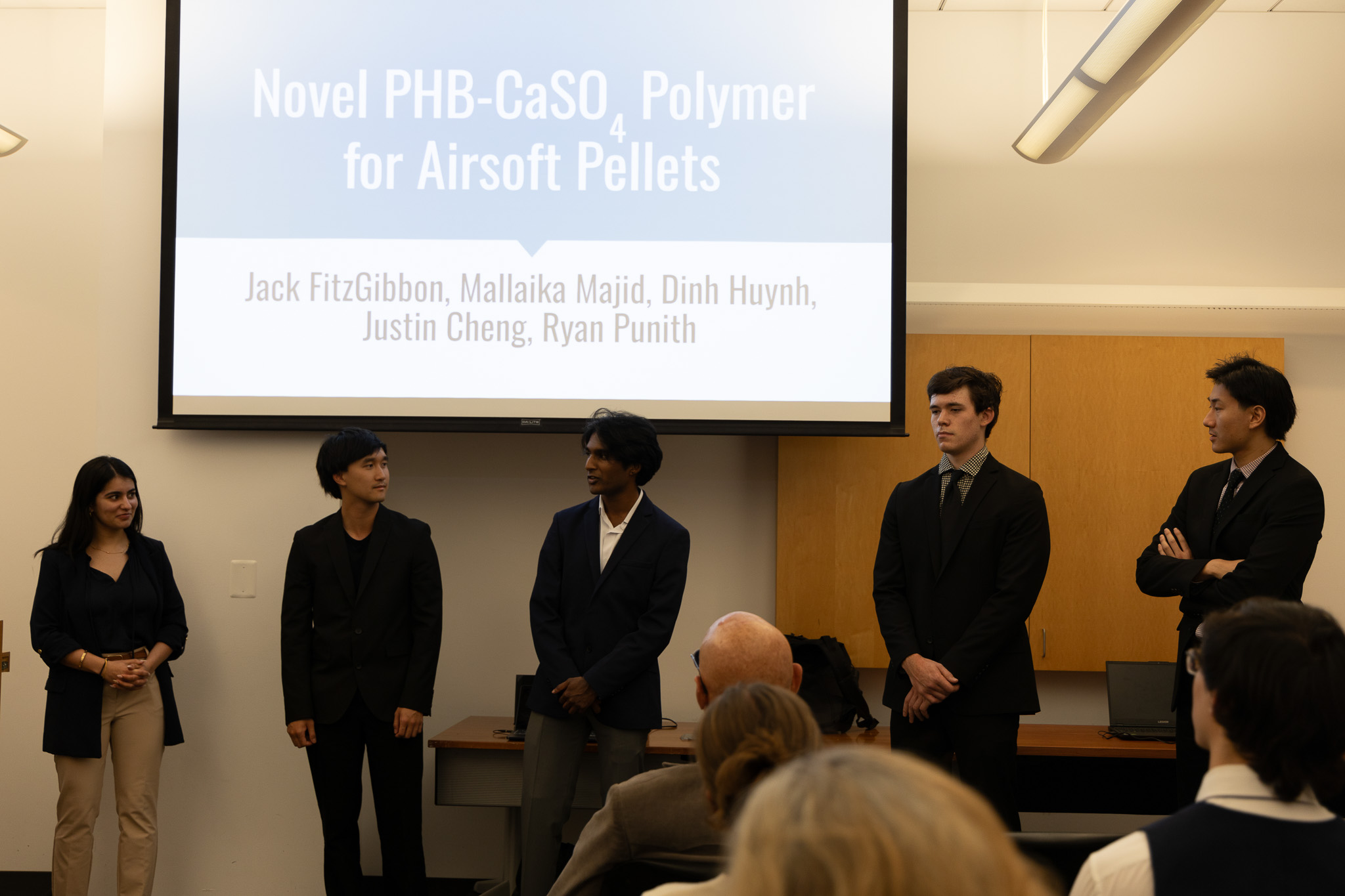
Group 2: "Plasmon Productions: Plasmon and PCM Based Matrix Multiplier."
Watch Supplementary Video Here.

In this course, teams of students utilize what they have learned throughout their undergraduate studies to create their own engineering designs from concept to product. The Capstone Design experience is one of the most important parts of the Clark School's engineering program—each department offers their own version.
Jump to Previous CapstonesView 2024 Photos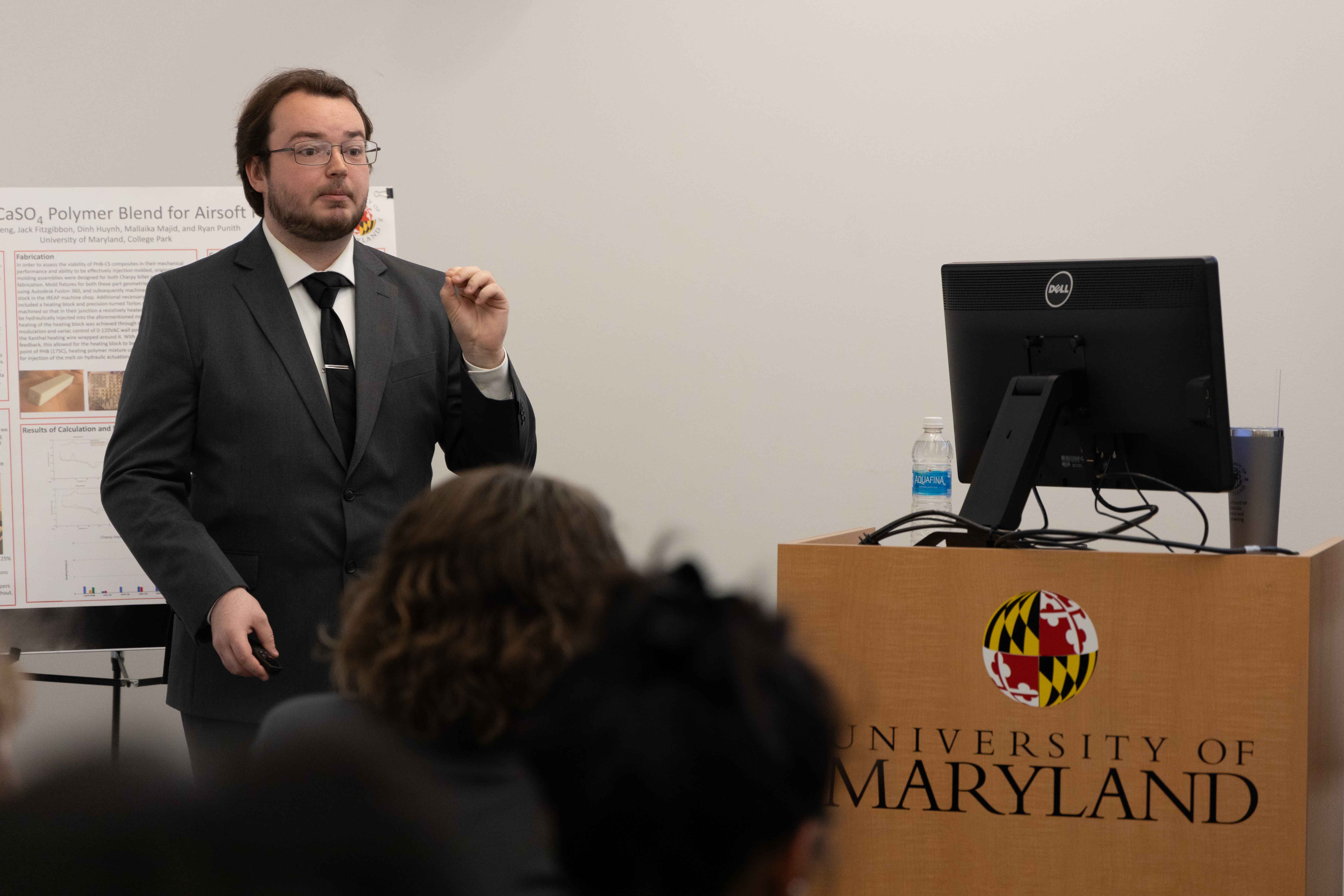
Design is a key theme in materials science and engineering, delivering solutions from the understanding achieved by analysis. Design also opens the door to creativity and invention. New materials are revolutionizing many areas of advanced technology. This is a design project course in which the students will work as a team. They will survey some of the exciting areas of new materials and microsystems, and they will identify opportunities where the inclusion of new materials can markedly advance microsystem design.
The goal is to develop a design including materials choice and process sequence, based upon societal, technological or industrial need. The work should be original and based upon the skills of the team.
The class will choose an appropriate project based upon solicitations, broad area announcements, and/or the recent technical literature. Students are expected to exploit their knowledge and experience from prior courses in materials and related domains. They will search for background knowledge and prior work, develop requirements for a solution to the problem, identify and analyze candidate designs, use modeling and possibly experimental approaches to evaluate key issues, and generate a final presentation and final report for the project. The class will organize itself into subgroups as appropriate through the semester, and each student will regularly report to their subgroup and the class in written and oral form, using Blackboard and class and subgroup meeting times for communications. The class will keep records of its task organization, progress, and individual and group assignments, so that the development process for the project can be monitored continuously and evaluated at the end of the semester. Finally, students will complete an evaluation at the end of the course, a self-assessment, a peer assessment, and an assessment of the instructor and the course.
Download the syllabus (PDF)
Download the course evaluation form (.doc)
The class investigated possible strategies for materials, processes, and device designs which would enable multilevel microfluidics transport and control in bioMEMS systems. Students carried out experimental work to construct and test a prototype PDMS-based microfluidic system involving two layers of horizontal/lateral microfluidic channels connected by vertical interconnects, and they also designed and built a second test structure using SU-8, PDMS, and valves controlled by gas-filled control lines. The project included emphasis on materials properties, associated processes, process flow and integration, test site design, experimental fabrication and test, and modeling. Since the project depended on the application of materials to devices and structures, students became familiar with the MEMS world as well as with the real experience of working in a team and managing their resources toward a goal with a deadline.
Group 1: "Novel PHB-CaSO4 Polymer Blend for Biodegradable Airsoft Pellets."
Watch Supplementary Video Here.

Group 2: "Plasmon Productions: Plasmon and PCM Based Matrix Multiplier."
Watch Supplementary Video Here.

Group 1: "Recycled HDPE-EVA Composite."
Watch Supplementary Video Here.
Group 2: "Piezoelectric Device for Energy Harvesting."
Watch Supplementary Video Here.
Group 3: "Autonomous Nucleation of Silver to Heal Surface Defects."
Watch Supplementary Video Here.
Group 4: "Functionalized Graphene Coating for Improved Tribological Properties of Ski Bases."
Watch Supplementary Video Here.
Group 1: "3D Printing Programmable Materials with Complex Geometries."
Group 2: "An Investigation Into Various Methods for Filtering Arsenic Contamination From Water."
Group 3: "Bio-inspired Floorboard Design for Off-Road Vehicles to Resist Debris Puncture."
Group 4: "Synthesis of Ceramic-Polymer Composite Electrolytes and Spinel Trilayer Optimization for Lithium-Ion Batteries."
Group 1: "Polymer/Metal-Organic Framework Mixed-Matrix Membrane for the Photoelectric Reduction of CO2."
Group 2: "Thin Film Impressed Current Protection for Ferrous Metal."
Group 3: "Design of a Novel Nanocomposite for Stereolithographic Additive Manufacturing of Strain Sensors."
Group 4: "Solid-State Composite Electrolyte of SiO 2 /PEO/PTFE/NaClO 4 for Sodium Ion Batteries."
Group 5: "Adaptive Cooling Via Shape Memory Alloy."
Group 6: "Developing a pH-Sensitive Hydrogel for Agricultural Applications."
Group 1: "Nylon Based Copolymers For Biodegradable Fishing Net Applications."
Group 2: "Daisy Chain Approach to the Study of Solid-State Battery Interfaces."
Group 3: "Additive Manufacturing of Compositionally Graded Ni-Cu Alloy System for Crack Detection and Propagation."
Group 1: Design of a Double Pane Transparent Wood Window
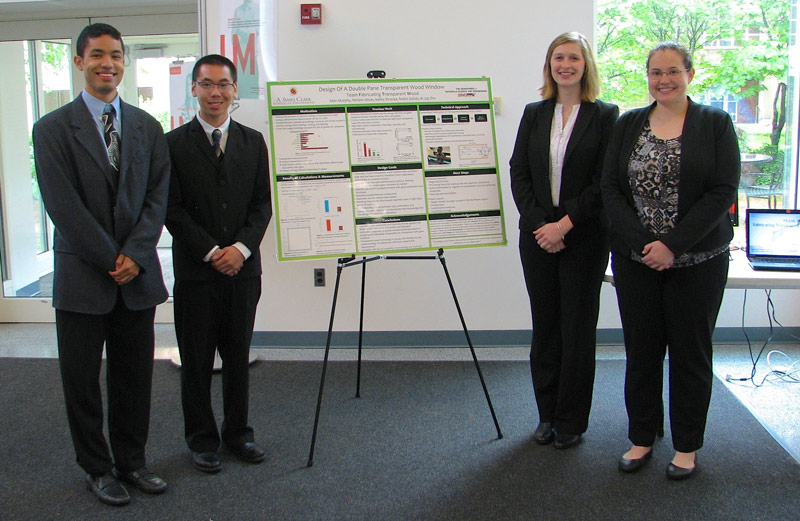
Group 2: Enhanced Tool Steel with Chemical Vapor Deposition Diamond
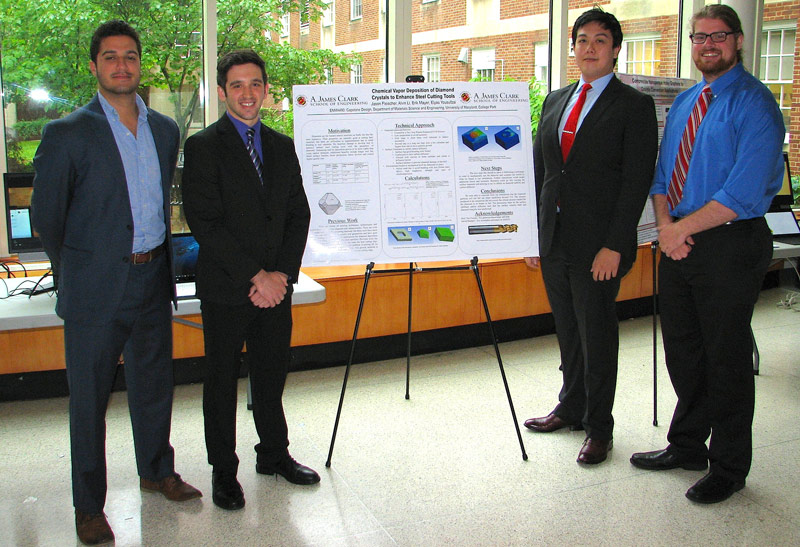
Group 3: Applying Sharklet Technologies to Shrinkable Films

Group 4: Compressible Nanoporous Holey Graphene for Catalytic Conversion Applications
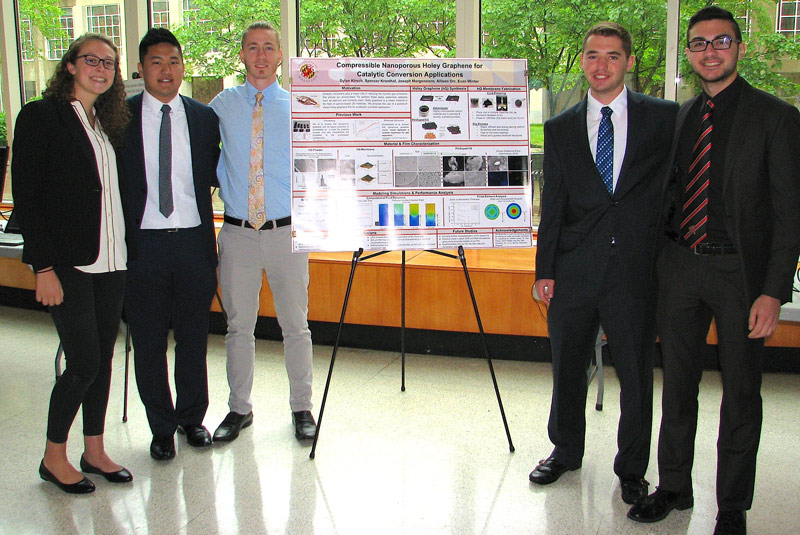
Group 5: Ag-Cu Alloys for Plasmonic Solar Cell Enhancement
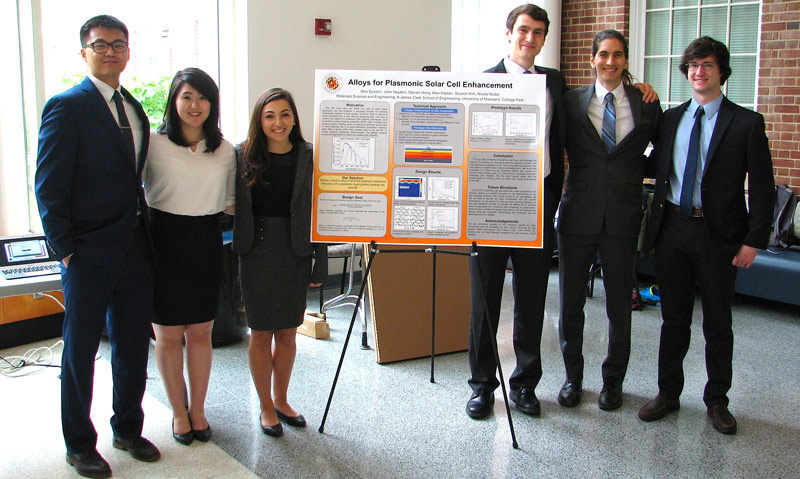
"Synthesizing a Ceramic Nanocomposite Filament for Extrusion 3D Printing" - Group 1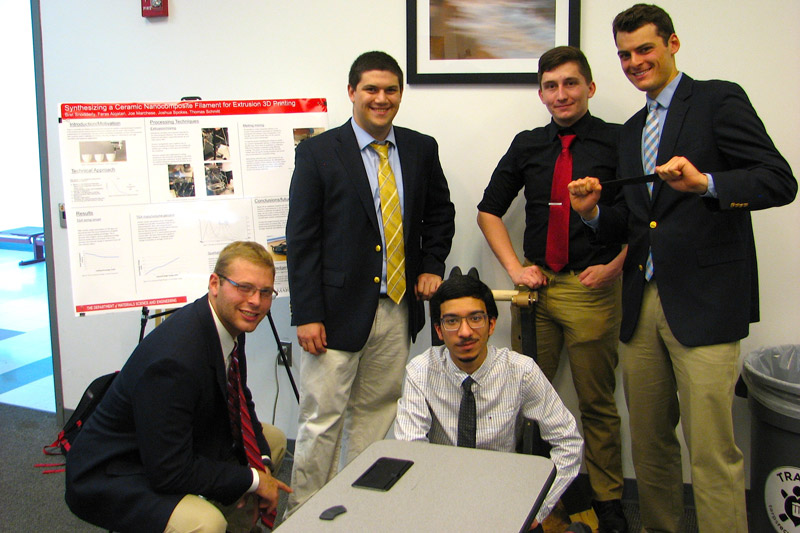
"Fabrication and Testing of Biocompatible 3D Printed PEG for Use in Spinal Nerve Regeneration" - Group 2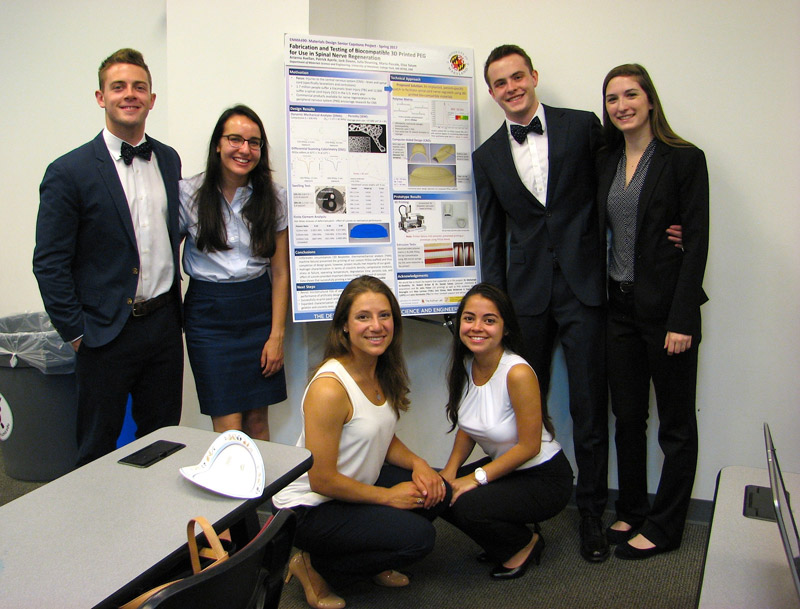
"Design, Fabrication and Characterization of Stretchable Silicon Photovoltaic Devices" - Group 3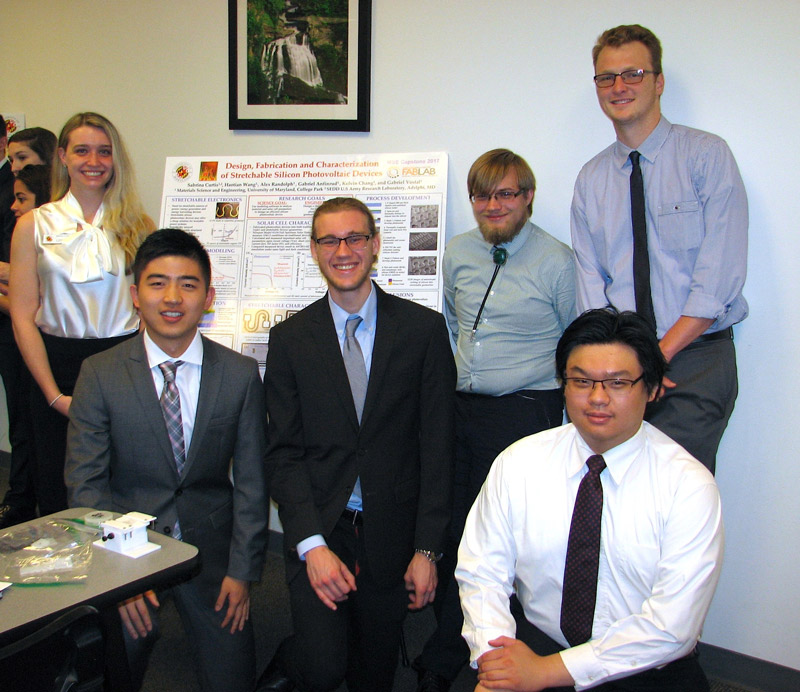
"The Synthesis of Geosynthetic Barriers for Foundational Systems in Building Construction" - Group 4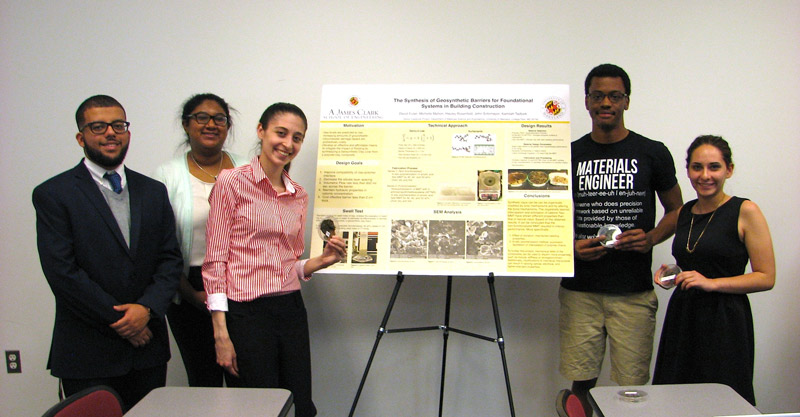
"Functional Magnetic Paint" - Group 5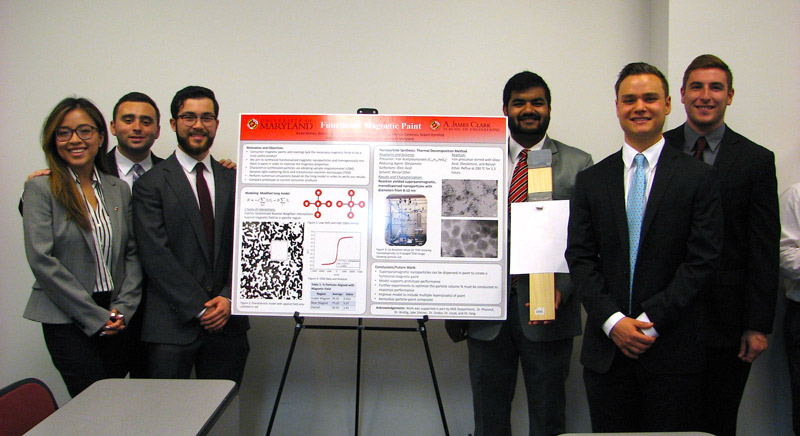
"Investigation of Nanoparticals… Kevlar Surface" - Group 6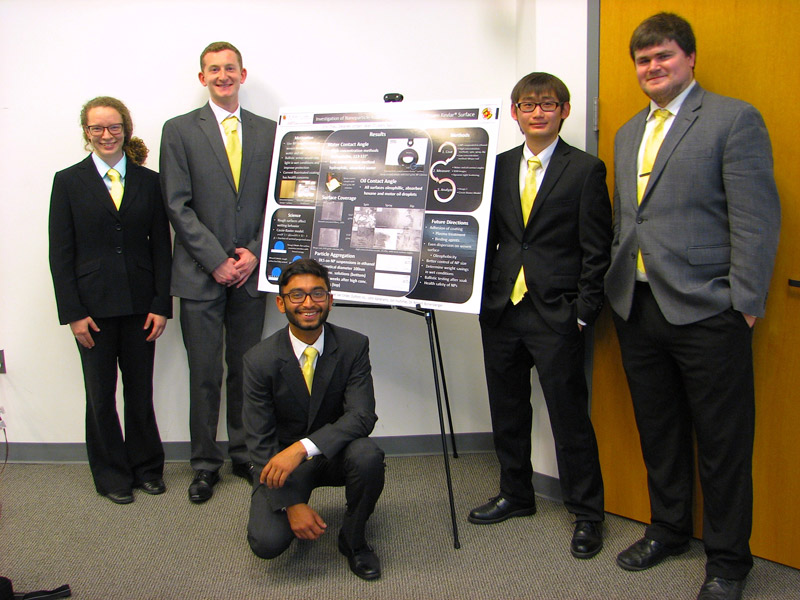
"CNT-Coated Kevlar for Conductive, High-Strength Textile in Wind Turbine Blade Applications" - Group 7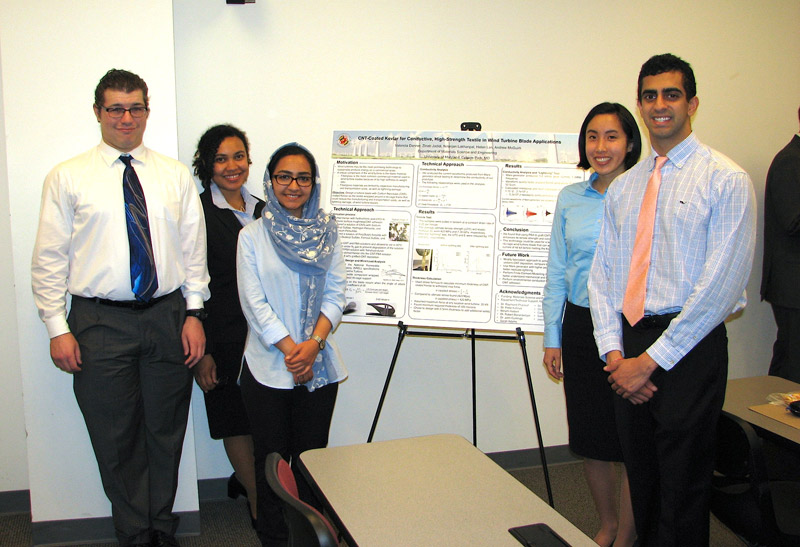
"Adipose-Tissue-Inspired Viscoelastic Composite for Tunable Soft Implant and Elastomer Applications " (PDF)
"Consumer-Applicable Retroreflective Microspheres for Use in Polyester Fabrics" (PDF)
"Infrared Antireflection Moth's Eye Nanostructures" (PDF)
"Radio Frequency Welding of Multi-Walled Carbon Nanotubes for Plastic Bonding" (PDF)
"Scalable Production of Nanofiber Filtration Membranes via Solutions Blow Spinning" (PDF)
"Sprayable Piezoresistive Strain Gauges" (PDF)
Fiber-Reinforced Carbon Aerogel: Final Presentation (PDF)
Fiber-Reinforced Carbon Aerogel: Final Report (PDF)
Fiber-Reinforced Carbon Aerogel: Poster (PDF)
Transparent Armor: Final Presentation (PDF)
Transparent Armor: Final Report (PDF)
Transparent Armor: Poster (PDF)
Graphene Sponge: Final Presentation (PDF)
Graphene Sponge: Final Report (PDF)
Graphene Sponge: Poster (PDF)
Superabsorbent Polymer Runoff Filter: Final Presentation (PDF)
Superabsorbent Polymer Runoff Filter: Final Report (PDF)
Superabsorbent Polymer Runoff Filter: Poster (PDF)
Woven Bamboo Composites: Final Presentation (PDF)
Woven Bamboo Composites: Final Report (PDF)
Graphene-SiC Ceramic Composites: Final Presentation (PDF)
Graphene-SiC Ceramic Composites: Final Report (PDF)
Graphene-SiC Ceramic Composites: Poster (PDF)
3D Concrete Printing: Final Presentation (PDF)
3D Concrete Printing: Final Report (PDF)
Smart Windows: Final Presentation (PDF)
Smart Windows: Final Report (PDF)
Soft Body Armor: Final Presentation (PDF)
Soft Body Armor: Final Report (PDF)
Sprayable Nanosilver Composite: Final Presentation (PDF)
Sprayable Nanosilver Composite: Final Report (PDF)
Team Dendrimer Final Presentation (PDF)
Team Dendrimer Final Report (PDF)
Team Dramastic Final Presentation (PDF)
Team Dramastic Final Report (PDF)
Team H2 Final Presentation (PDF)
Team H2 Final Report (PDF)
Team SMP Final Presentation (PDF)
Team SMP Final Report (PDF)